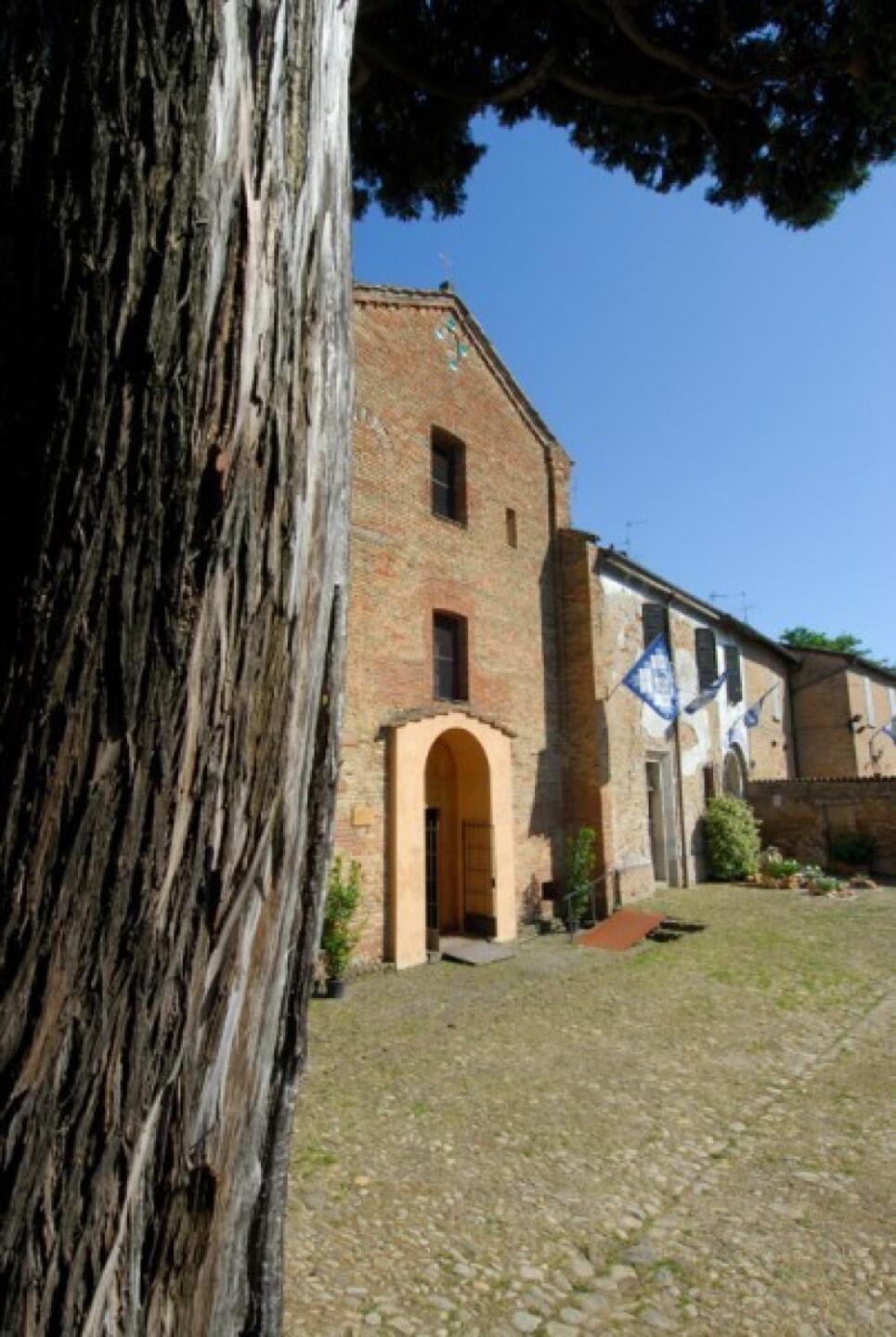Chiesa della Commenda
The Commenda was probably founded in the first half of the twelfth century (the first certified documentation is from 1137), although the oldest parts that can be seen today go back to the thirteenth century (apse and part of the bell tower) and the fourteenth century (portico for the sheltering of pilgrims on the left side).
It was erected together with the adjacent Ospizio del Santo Sepolcro (Hospice of the Holy Sepulcher), to accommodate pilgrims coming from or going to the Holy Land; already in the thirteenth century it was property of the Knights of the Order of Saint John of Jerusalem (later of Malta), who managed it through Commendatories, ie abbots, to whom the building was also entrusted from an economic point of view. The most enlightened of the Commendators was the Milanese Fra Sabba da Castiglione (1480 – 1554), a learned humanist who promoted restorations and called upon various artists to work. For the former, it is worth mentioning the reconstruction of the adjacent cloister, in 1525 and for the latter the great fresco of the apsidal basin, made by Fra Sabba in 1533 at Girolamo da Treviso, passing through Faenza. In this section, where the most fascinating work of art of the Commenda, appears – framed in an architectural perspective of refined Renaissance taste, with background landscapes – three women (the Virgin with Child and San Giovannino, Santa Maria Maddalena, with at the feet of the Sepulcher, and Saint Catherine of Alexandria with the toothed wheel symbol of her martyrdom): to adore them, on the left, kneeling, is the same Fra Sabba in “uniform” by brother warrior: Renaissance jacket, helmet and sword .
The other important work is on the left wall and consists of a monochrome fresco with Fra Sabba now much older, presented by Saint Joseph (patron of good death) to the virgin, while on the left are the Baptist and Mary Magdalene. Below, in black stone, there is his tombstone, with a moving Latin epigraph composed by himself and, on the sides, the allegorical figures of the Pietà and the Silence, the work is by Francesco Menzocchi from Forlivese and dated just before 1554, the year of death of Fra Sabba.
On the walls you can also see interesting fragments of frescoes from the local school dating to the 14th century.







